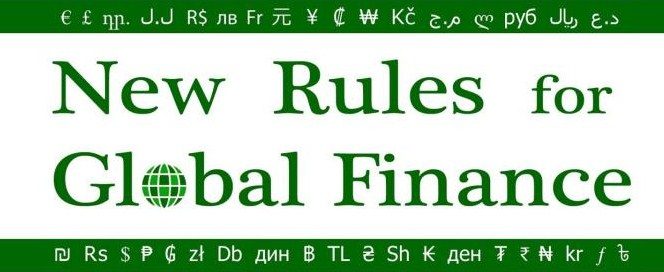Statutory Approach: SDRM
The Statutory Approach
Many observers believe that CACs are insufficiently robust to solve many of the problems associated with sovereign debt restructuring. A number of them have called for the creation of a more formal, statutory mechanism or framework for restructuring sovereign debt – something akin to an international bankruptcy procedure for sovereigns. The most concrete and high-profile proposal of this sort was Anne Krueger’s call in 2001 for the creation of a Sovereign Debt Restructuring Mechanism (SDRM) (Krueger 2001). Grounded in an international legal framework that would bind all countries and supersede the provisions of private loan agreements, this treaty-based approach would require amending the IMF’s Articles of Agreement, which is intentionally difficult to do.
In general, a statutory restructuring mechanism would presumably include four key features (Eichengreen 2006). First, in the event of a restructuring, the mechanism would impose hard restraints on litigation so as to prevent a costly and time-consuming “rush to the courthouse” on the part of creditors (Kolb 2011; Haley 2014). Depending on the design of the mechanism, restraints on litigation could be subject to approval by a supermajority of creditors. Second, there would be a procedure for assigning creditorseniority and ensuring that new private lending is protected from restructuring. Third, a statutory mechanism would allow a supermajority of creditors to vote to accept the terms of a restructuring arrangement, and ensure that minority creditors were bound by this decision. Finally, the mechanism would include a venue and process for fact-checking information, resolving disputes, and overseeing the bondholder voting process.
As Eichengreen (2006: 443) explains, “a statutory approach like the sovereign debt restructuring mechanism elaborates the U.S.-style court-led approach to debt restructuring by relying on statutes to create a quasi-judicial process for debt reorganization, while collective action clauses attempt to extend the traditional UK-style approach that relies on contracting and on self-organizing creditors, with little if any court involvement.” Proponents of the statutory approach argue that it would solve the aggregation problem of not being able to bind all bondholders to a restructuring deal that a supermajority of creditors agree to. It can also be argued that a statutory approach would de-stigmatize restructuring and encourage governments with unsustainable debts to take early action, rather than delay the inevitable. But critics claim that a statutory arrangement would be arbitrary and would interfere with the efficient workings of market forces (Rieffel 2003). They also contend that such an approach is politically infeasible. It is indeed true that in the early 2000s the SDRM proposal failed to receive sufficient support from state and market actors.
Issues for Discussion
· How would you assess the pros and cons of the contractual and the statutory approaches respectively?
· Ostensibly, the statutory and contractual approaches seek to do many of the same things (overcome collective action problems, prevent individual bondholders from pursuing litigation, facilitate agreement on restructuring terms amongst a (super) majority of bondholders). What, then, are the real substantive differences between these two approaches? Why is one seen as more ambitious and politically unrealistic?
The Rise and Fall of the SDRM
In the wake of a series of large-scale emerging market crises, and with the 2001 Argentine crisis brewing, a few top US officials began to consider proposals for an international sovereign bankruptcy regime. In September 2001, (just prior to the Argentine default) Paul O’Neill approached both senior IMF management and the US Congress to suggest they give serious consideration to the idea of an international bankruptcy law for sovereign debtors (Helleiner 2009: 8). In November 2001, then IMF deputy managing director, Anne Krueger, formally proposed a “sovereign debt restructuring mechanism” (SDRM). Housed in the IMF, the SDRM would provide a formal bankruptcy procedure for sovereigns. In short, it would be a legal mechanism designed to approve payments standstills for sovereign states experiencing severe debt servicing difficulties and facilitate the restructuring and, if necessary, writing down of sovereign debts (Fischer 2003). An SDRM, it was argued, would address the moral hazard problem by minimizing private sector bailouts, and, by establishing a more timely and orderly way of resolving SDCs, it would provide benefits to both debtors and creditors (Helleiner 2009).
In the end, support for the SDRM was not strong enough to overcome the opposition of private creditors, key officials within the US, and even some sovereign debtors. Private creditor associations lobbied key individuals within the US Treasury Department and the IMF and, when CACs emerged as a potential alternative to the SDRM, they threw their weight behind this approach and even lobbied sovereign debtors to do the same. The logic ran that the widespread adoption of CACs would render the SDRM unnecessary, but sovereign debtors still worried that their support for any restructuring mechanism – even CACs – would compromise their perceived creditworthiness. In the end, it took direct lobbying on the part of creditors to convince the Mexican government that issuing CACs in its sovereign bonds would not compromise its access to affordable external credit, whereas the SDRM would. Ultimately, Mexico’s decision in 2003 to include CACs in its bonds was a success, marking the SDRM’s downfall (Gelpern and Gulati 2004).
